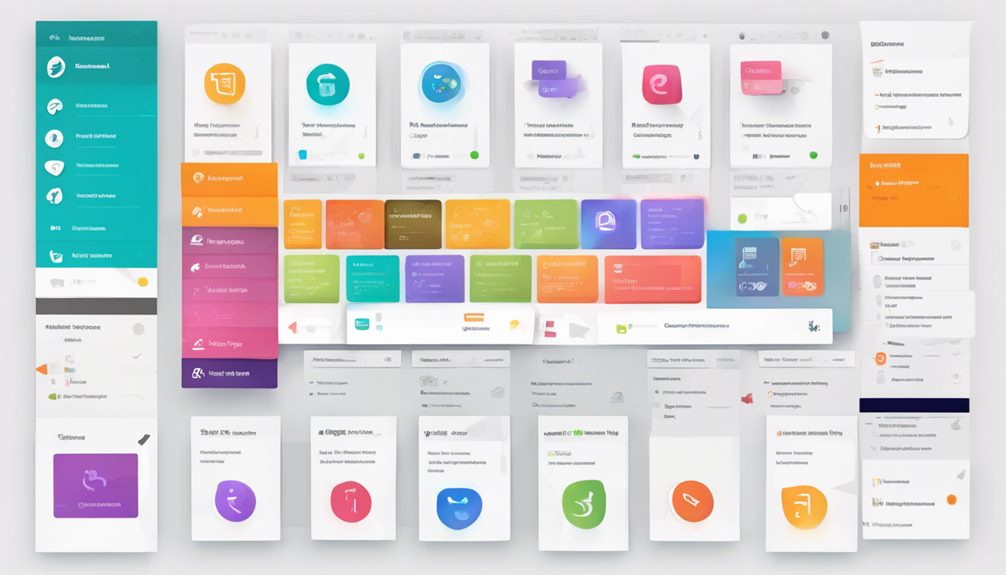Imagine your website as a bustling city, where white hat SEO is the infrastructure that keeps everything running smoothly. You know that to truly engage your users, you need to prioritize their journey by ensuring mobile responsiveness and swift page load speeds. Crafting quality content and optimizing navigation are your tools to guide them seamlessly through your digital landscape. But there's more to it—how can you use structured data, visual appeal, and user interactivity to transform casual visitors into a loyal community? Let's explore the strategies that can elevate your user engagement to new heights.
Prioritize Mobile Responsiveness
In today's digital landscape, mobile responsiveness isn't just a nice-to-have feature; it's a must-have for any website aiming to boost user engagement and enhance SEO performance.
With over 50% of web traffic coming from mobile devices, ensuring your site adapts seamlessly to various screen sizes is crucial. Google prioritizes mobile-friendly websites in its search rankings, reflecting their importance.
By optimizing for mobile, you reduce bounce rates and increase user retention, which are critical for successful engagement metrics. Test your site's mobile responsiveness using tools like Google's Mobile-Friendly Test.
Implement flexible grids, scalable images, and touch-friendly elements to improve usability. Remember, a mobile-responsive design not only satisfies users but also aligns with Google's mobile-first indexing, ultimately boosting your SEO strategy.
Enhance Page Load Speed
As you optimize for mobile responsiveness, it's equally important to focus on enhancing page load speed to further improve user engagement and SEO performance.
Fast-loading pages not only boost user satisfaction but also increase your site's ranking on search engines. Research shows that a one-second delay can result in 7% fewer conversions.
To enhance load speed:
- Compress images: Use tools to reduce image sizes without compromising quality.
- Enable browser caching: Allow returning visitors to load your site faster by storing elements locally.
- Minimize HTTP requests: Reduce the number of requests by combining files.
- Optimize code: Clean up unnecessary spaces, commas, and code to streamline loading.
Optimize Website Navigation

Smooth website navigation is crucial for enhancing user engagement and boosting SEO performance. When users find what they're looking for quickly, they stick around longer, reducing bounce rates.
To optimize your website's navigation, start by organizing your content logically. Use data-driven insights to understand what users search for most and make those links prominent. Implement a clear, keyword-focused menu structure that reflects your site's hierarchy.
Utilize breadcrumb navigation to guide users seamlessly through different pages, improving their experience. Ensure mobile-friendly navigation, as over 50% of global web traffic comes from mobile devices.
Test your navigation regularly to identify and fix any issues. Use analytics to measure user behavior and adjust accordingly. A well-optimized navigation system not only satisfies users but also signals search engines about your site's relevance.
Craft High-Quality Content
To effectively engage your audience and enhance SEO performance, you need to craft high-quality content that resonates with your users' needs and interests.
Focus on creating content that's not only informative but also engaging and valuable. Prioritize clarity and relevance to keep users coming back. Data-driven strategies can guide your content creation, ensuring you meet the demands of your target audience.
Consider the following to elevate your content:
- Use Keywords Wisely: Incorporate relevant keywords naturally to improve search visibility without compromising readability.
- Stay Current: Regularly update content to reflect the latest trends and data, keeping it fresh and authoritative.
- Engage Emotionally: Connect with your audience on an emotional level to foster trust and loyalty.
- Provide Solutions: Address common user pain points with actionable, solution-oriented content.
These strategies can significantly boost user engagement.
Implement Structured Data

When it comes to enhancing your website's search engine visibility, implementing structured data is a game-changer. Structured data helps search engines understand your content better, increasing the chances of your site appearing in rich snippets.
By utilizing schema markup, you provide context to your data, improving click-through rates (CTR) by up to 30%. This approach isn't just about ranking higher; it's about making your content accessible and engaging for users.
To start, identify the types of rich results that suit your content—like FAQs, reviews, or events. Use Google's Structured Data Markup Helper to simplify the process.
Monitor your performance with Google Search Console, ensuring your structured data is error-free. By prioritizing structured data, you're not just optimizing for search engines; you're enhancing user experience.
Focus on Visual Appeal
A striking visual appeal can significantly boost user engagement and retention on your website. By optimizing your site's design, you can enhance the user experience, making it more intuitive and enjoyable.
Keep in mind that visuals are processed 60,000 times faster than text, making them a critical component in capturing attention. Here are some elements to focus on:
- Color Scheme: Use complementary colors that reflect your brand's identity and evoke the desired emotions.
- Typography: Choose readable fonts that support the overall aesthetic and readability of your content.
- Imagery: Incorporate high-quality images and graphics that resonate with your audience and illustrate key points.
- Layout: Implement a clean, organized structure that guides users naturally through your content.
Prioritize visual appeal to keep users coming back.
Encourage User Interactivity

User interactivity transforms a static website into a dynamic platform that captivates and retains visitors. By integrating interactive elements such as quizzes, polls, and engaging content, you can boost user engagement and dwell time.
Studies show that interactive content generates 2x more conversions than passive content. Encourage users to participate by incorporating clickable infographics and gamified elements that make exploring your site fun and rewarding.
This approach not only enhances user experience but also improves SEO rankings by increasing page views and reducing bounce rates. Utilize clear calls-to-action that guide visitors to interact with your content, ensuring a seamless journey.
Utilize User Feedback
In today's digital landscape, leveraging user feedback isn't just an option; it's a necessity for optimizing your website's SEO and enhancing user engagement. By actively seeking and analyzing user input, you refine content strategies, improve usability, and increase search visibility.
To effectively utilize feedback, focus on these key areas:
- Surveys and Polls: Gather direct insights into user preferences and pain points, helping you tailor content that resonates.
- Comment Sections: Monitor and respond to user comments, fostering a community and boosting on-page engagement signals.
- Analytics Tools: Use data to track user behavior, identify trends, and adjust strategies based on real-time feedback.
- Social Media Listening: Monitor brand mentions and sentiments to understand user perceptions and adapt your content accordingly.
Implement these strategies to transform feedback into actionable SEO enhancements.
Conclusion
In the world of SEO, "slow and steady wins the race." By prioritizing mobile responsiveness, enhancing page load speed, and optimizing navigation, you're setting the stage for success. Craft high-quality content, use structured data, and focus on visual appeal to captivate your audience. Encourage user interactivity and actively seek feedback to foster community and build trust. These user-centric, data-driven strategies ensure you'll not only elevate engagement but also boost conversion rates and achieve sustained online success.


